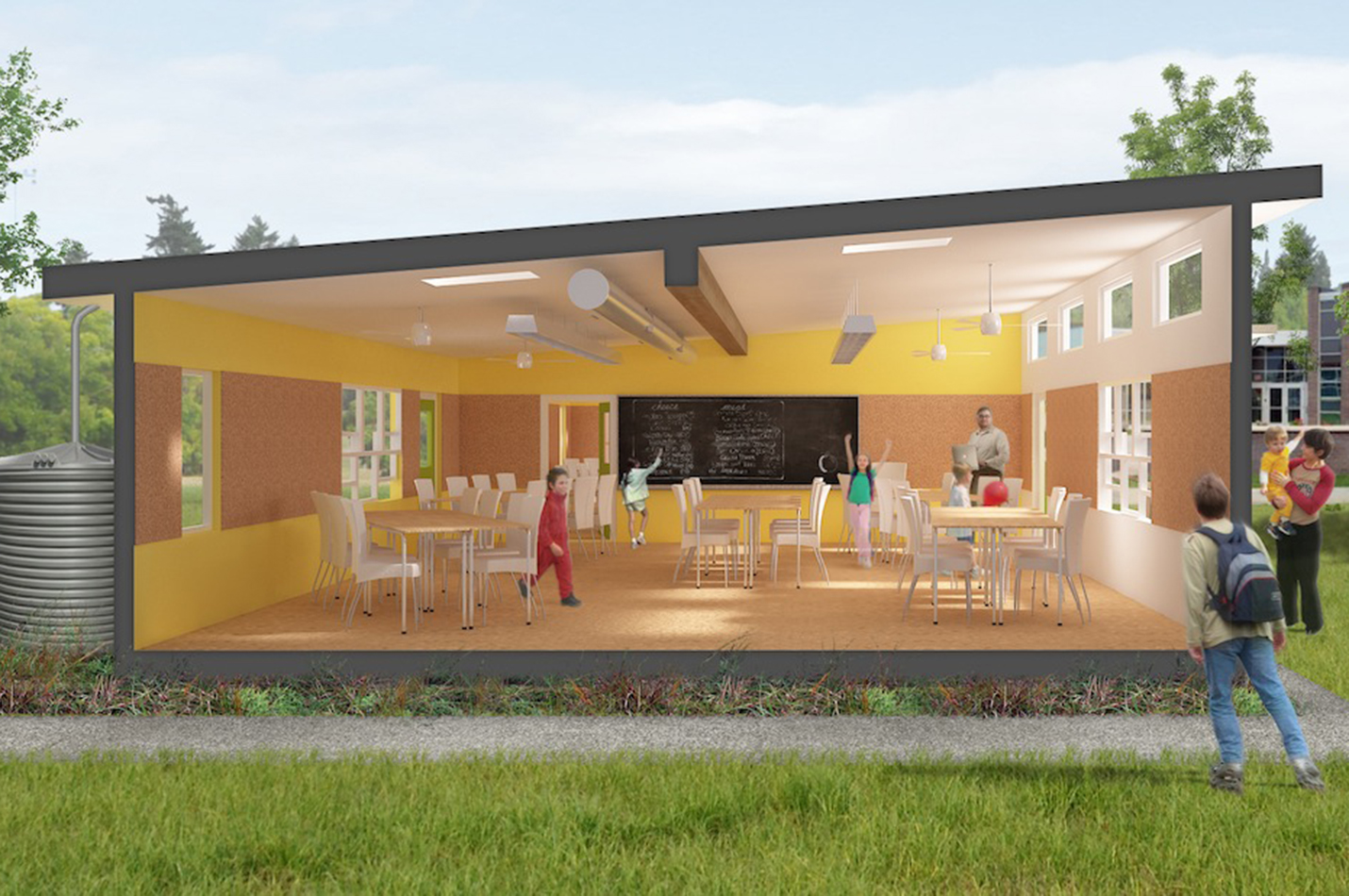Taking modular classroom design back to school
In 2012, PAE collaborated with Portland State University, Blazer Industries, Luma Lighting Design and other local industry partners to revolutionize modular classroom design.
Traditional modular classroom buildings are notorious for substandard acoustics, indoor air quality, and lighting as well as poor energy performance. The team set out with a goal to improve on all of these categories while still maintaining a competitive first cost. PAE and Luma brought expertise in energy and airflow modeling, as well as HVAC and lighting design.
The team found that by employing architectural strategies including operable windows, phase change wall board and ceiling fans, mechanical cooling could be eliminated from the design. Traditional (noisy) through the wall heat pumps could be replaced by smaller, quieter, 100% outside air ventilation units. Not only do the units provide an increased quantity of fresh air compared to the traditional design, they utilize integral plate heat exchanges to warm the ventilation air with the outgoing exhaust air. The positive effects of increased ventilation on occupant health and productivity are well documented and the energy savings associated with heat recovery are easily quantifiable with energy modeling software.
The high performance envelope and heat recovery ventilation both account for a major reduction in heating load compared to traditional designs. Energy modeling indicated that because the amount of heating required was small, the first cost savings and design simplicity of using only electric resistance heat – in lieu or a more efficient but expensive heat pump – was the overall best fit for the project. Reducing the cost and complexity of a heating system, by focusing first on reducing the heating load, is an example of holistic design sometimes referred to as “tunneling though the cost barrier.”
The annual energy cost for the Smart Academic Green Environment (SAGE) Classroom is expected to save approximately $600 per year, or about 45%, compared to a traditional modular classroom design. The graph below shows the average monthly energy use for three existing Portland based modular classrooms (from utility billing data) as well as energy model results for an “Energy Code Baseline” unit, and finally modeled results for the as designed SAGE classroom.
*Credit: Tim Elley, PE, LEED AP
Tim is a mechanical engineer with 7 years of experience and is a registered professional engineer in the state of Oregon. *



